Say cheese: Chefs lead the whey in new-wave cheesemaking
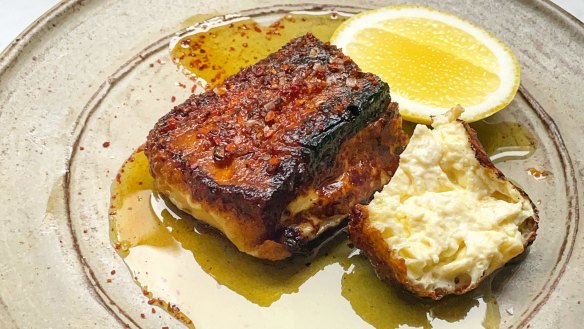
A new school of cheesemakers is emerging from restaurant kitchens rather than dairy farms.
No matter how many times the same oozing, molten cheese shows up on my Instagram feed, I can't help but tap the heart icon. My reflexes and I are not alone. Every photo that Sydney chef Colin Wood posts of his golden-fried, jersey milk cheese attracts hundreds of likes, fire-sign emojis and comments. It is fair to say his cheese has been one of the internet sensations of 2021.
Wood is part of a whole new school of cheesemakers that are emerging not from dairy farms but from restaurant kitchens. Chefs are staging a quiet revolution, occupying empty restaurants on their days off, sourcing top-quality milk and making cheese on a scale that allows them to push the boundaries of not just flavour but also the very concept of what cheese is.
Those venues range from Pipit in northern NSW, to Hazel, slotted among a string of Melbourne's top restaurants on Flinders Lane.
Cheesemaking is no longer just a pastoral pastime. "Their restaurant is their farmgate," says Anthony Femia of Melboune cheese shop Maker & Monger.
Some people might go for a swim on their day off. For me, getting some milk and going home to experiment really helped me relax.Colin Wood
One chef might age cheddar in venison fat, a waste product from another dish. Fermented chestnuts might be layered into a semi-hard cheese for extra complexity. It's a huge leap from even the most celebrated artisan cheeses being sold today.
Most cheese in Australia is made by large dairies, although a burgeoning number of producers are making cheese from the milk of their own animals (termed 'farmhouse cheese').
The volumes made by major dairies and the strict food regulations that all producers must follow mean there are few avenues for experimentation.
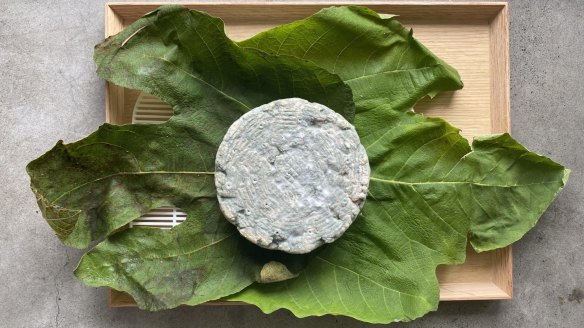
The world of a chef is a different story. The likes of Jo Barrett, Ben Devlin and Wood are free to follow their instincts, with lower overheads, less red tape and the freedom that comes with producing something that's not your core business.
And then there's the milk.
Carefully selected from small dairies where animals are entirely pasture-fed, it's lush and creamy, with supremely high protein and fat content.
But why go to the trouble of buying litres of this milk each week, tending to cheeses for many months, riding out the rollercoaster of trial and error – and doing most of this on your day off?
Leading maker and instructor Kristen Allan believes it's a desire to slow down.
"We put ourselves in these high energy environments, whereas with something like cheese you stop and slow down and it's quite meditative," she says. "You're right in the moment."
Allan has taught enthusiasts how to make ricotta, mozzarella and more for nine years, but has seen interest steadily increase over the past three years, especially during these latest lockdowns.
Chefs are among those inquiring, as are baristas wanting to add their own halloumi or ricotta to their cafe menus.
Cheese joins a roll-call of handcrafted products that have been flourishing on menus over the past decade, along with bread, yoghurt, pickled vegetables, charcuterie, butter, miso and syrups. It's another way for a restaurant to offer guests a fully rounded experience showcasing its team's skills and hospitality.
"The beauty of making cheese is that you never stop learning," says Femia. "Every day you're troubleshooting, you're seeing a product develop in front of your eyes, you're developing your palate."
Some in the dairy industry aren't happy about it. Given the freedom chefs have to make whatever they please, it's little wonder they're able to turn heads. But others feel the movement benefits all makers, commercial and otherwise.
"The chefs have brought the cheese into the culinary world, which is so important," Femia says.
Wood, who has made cheese for 10 years at restaurants including Cumulus Inc in Melbourne and Poly in Sydney, wants cheesemakers across the industry to get their dues.
"I get to make the cheese and see how people respond to it," he says. "Cheesemakers often don't get that appreciation. I want to speak up for them and get people excited about what they do."
For now, Wood and his fellow trailblazers will keep pushing the frontiers of cheesemaking. We're up for the ride.
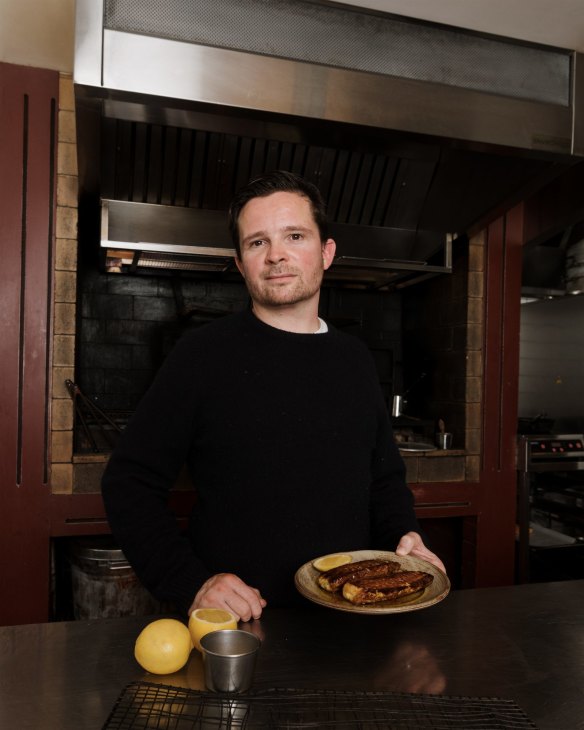
Colin Wood, Poly
Seeing your cheese used for a Cumulus Inc signature dish is surely a pinch-me moment. Being entrusted with cheese production across several venues owned by Melbourne mega-restauratuer Andrew McConnell, including Cutler & Co? That career high was Colin Wood's reality for nearly two years.
The chef caught the cheese bug from pioneering artisan cheesemaker Richard Thomas, who gave a demonstration at Cumulus Inc while Wood was head chef in 2013.
Soon, the chef was tenaciously practising his cheese at home each week.
"Some people might go for a swim on their day off. For me, going to see Ben at St David [Dairy], getting some milk and going home to experiment really helped me relax."
After getting his cheese to a standard McConnell was happy with, Wood was given two days each week to produce white mould cheeses, fresh curd and more from the kitchen of Marion on Gertrude Street.
Each morning he'd await a delivery of 200 litres of milk from St David Dairy, 800 metres away, that original owner Ben Evans had vetted himself.
Eight years later, after working in New York and briefly Perth, where he continued to use cheese to relax outside of work, Wood is wowing Sydney with his halloumi-inspired fresh cheese. Designed to be grilled, it has none of the rubbery texture we associate with halloumi from the supermarket.
Wood has gone from serving 30 portions to patrons of Poly in Surry Hills to making 780 portions for takeaway.
He and his curds have become a lethal weapon in the wine bar's takeaway offer, with new products coming thick and fast, whether it's fromage blanc doughnuts, ultra-decadent cream cheese or a spiced version of the not-halloumi.
Melbourne has been lucky to get one-off deliveries of the grilled cheese, with 280 pieces selling out in 16 minutes recently.
Gelato Messina supplies Wood with more than 500 litres of Jersey milk every week for his production, which he hopes to keep growing, experimenting with feta and one day, the more time-intensive hard cheeses.
The appeal of cheesemaking for Wood lies in the space between control and chaos.
"I think my background as an athlete influenced this," he says. "The concept of practice, repetition, skill. It's not going to be the same every time."
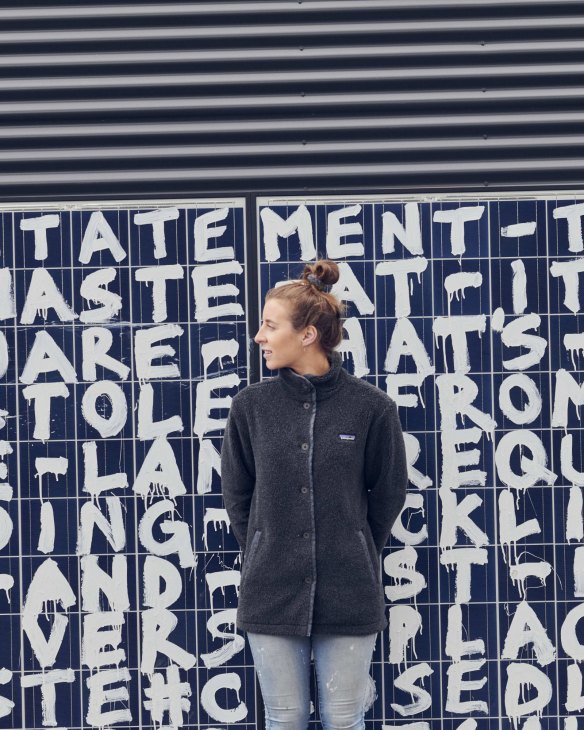
Jo Barrett, Future Food System
Chef Jo Barrett was living the dream when she first got into cheesemaking in 2016 at Yarra Valley winery restaurant Oakridge.
Nearby farm Little Yarra Dairy was producing too much milk for the restaurant to keep up with. Barrett and fellow chef Matt Stone decided they'd take the next step beyond the butter and cultured cream Oakridge made. That step was cheese.
"I was so lucky getting access to that milk. Those cows were raised in the Yarra Valley and we were taking the milk 12 or 24 hours later and turning it straight into cheese."
The lucky streak continued. Colin Wood was waiting for his US visa and more than happy to spend a few hours each week showing the couple the ropes of cheesemaking. Local cheesemaker Jack Holman, of Stone & Crow, also chipped in.
Barrett became known for her Jersey milk bries and, later, semi-hard cheeses, served as part of the tasting menu at Oakridge. Dishes also featured house-made burrata, feta marinated in herbs from the kitchen garden, yoghurt and fresh curd, all coming from the same herd of cows.
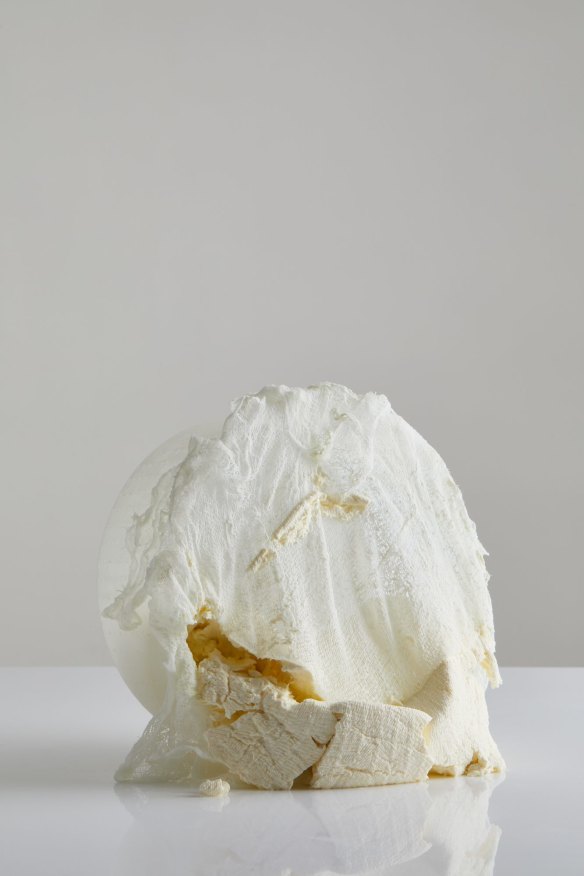
The milk is where the magic is for her.
"I love how with milk you can see the seasonal change. That really changes your cheese. It's completely connected to nature and the weather," she says.
Her instructional zine, Have A Go, which covers mozzarella, feta, sourdough and other crafty kitchen skills, was partly inspired by all the questions that come with the first stages of cheese-making. Each issue is full of pictures by photographer Jana Langhorst (see right) that demystify the process.
"Even if people make cheese once, I don't think they're taking away from the dairy industry. I think they have a new appreciation for it," Barrett says.
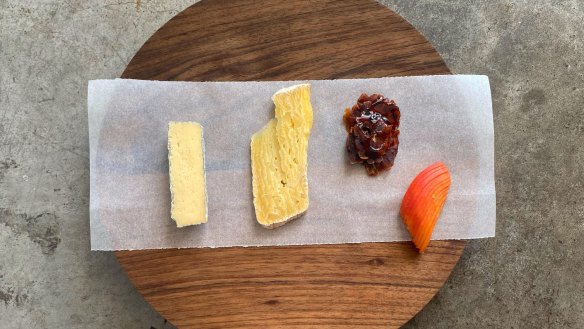
Ben Devlin, Pipit
"I have a tendency when I want to use [an ingredient] to first see if I can make it," says Ben Devlin, chef at Pipit in Pottsville, on the NSW North Coast.
That curiosity is seen in the koji, miso and other ferments used on Pipit's menus. Cheese, however, spooked Devlin.
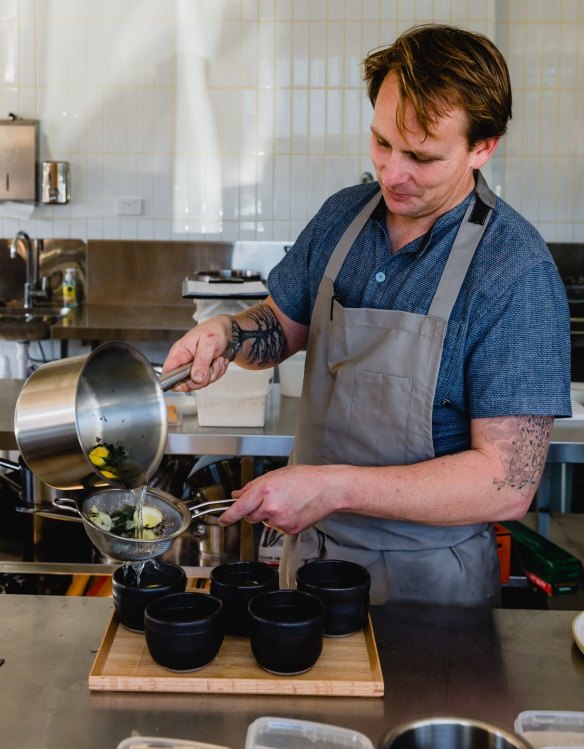
But nine months ago, he took the plunge, inspired by the achievements of peers such as Wood and Tasmania's Analiese Gregory.
Educating himself on the natural cheesemaking promoted by Canadian guru David Asher, whose book, The Art of Natural Cheesemaking, is used by many chefs, and the more controlled methods in Gianaclis Caldwell's book, Mastering Artisan Cheesemaking, Devlin spent his days off in Pipit's kitchen experimenting with all kinds of cheese.
The most successful of Devlin's cheeses turned out to be a roquefort aged in fig leaves, cheddar aged in duck fat (a byproduct of another Pipit dish) and vacherin, a washed rind cow's milk cheese that's ridiculously oozy, which Devlin aged in paperbark.
In the past month, he's felt happy enough to add these to the menu in the form of an entirely house-made Pipit cheeseboard.
"Now I was making the cheese myself, it made me feel like I need to serve it more simply and really show off the processes that have gone into making it."
His next goal is to create a brine out of the local seawater, a way to add more of Pipit's natural environment into the cheeses.
Cheese made in the Pipit kitchen is just another expression of the restaurant's low-waste, DIY and hyperlocal philosophy.
"It's becoming a more complete restaurant experience," Devlin says. "That's the type of restaurant that we really want to offer."
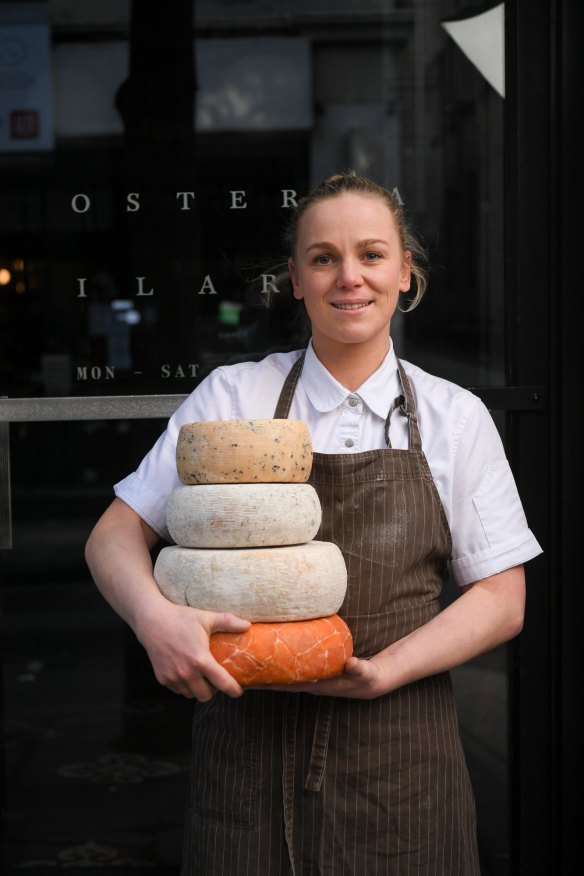
Lucy Whitlow, Osteria Ilaria
In Lucy Whitlow's kitchen, you'll find gym weights and pine-needle brushes, among the usual cheffy gear. The gym weights hang off the levers of her wooden cheese press, a new toy. The pine-needle brushes are used to sweep mould off the rind of semi-hard cheeses. Oh, and there are four fridges, each running at specific temperatures.
This DIY set-up is typical for many home cheesemakers.
Whitlow has a full-time job as a pastry chef at Melbourne CBD restaurant Osteria Ilaria but, in 2020 lockdowns, she spent hours at home practising her cheese skills.
And her employers are thrilled. Recently, they sent her to a week-long course at Ivan and Julie Larcher's Cheese School in Castlemaine and, when lockdown ends, will add Whitlow's cheese to the Ilaria menu.
Bries and tommes (a cheese traditionally made in the European Alps) made with naturally cultured milk are the New Zealand chef's thing.
Some tommes are matured in partially cooked mandarin skins, instead of wax or cloth, while others are rubbed with the ash of burnt onions. She's also experimented with mysost, a reduced whey cheese popular in Norway that's nutty and cleverly uses up the major byproduct of cheesemaking.
Whitlow firmly believes there's a difference between what she's doing and farmhouse cheese,.
"I don't have immediate access to a beautiful raw product from a range of animals, so I complement the product I do have access to, which is still beautiful, with a different fun ingredient or a different way of ageing."
Daniel Johnston, Alberto's Lounge
"I think I'd be on the chill end of cheesemaking", laughs Daniel Johnston, head chef at cool-kid Italian hangout Alberto's in Sydney.
For most of his 15-year cooking career, Johnston has made his own ricotta, a process that involves heating milk and cream (see recipe below), acidulating it with lemon, and then separating the whey to leave behind pillowy curds. Often, it's people's first foray into cheesemaking.
Johnston honed his skills when he was working with Kristen Allan many years ago and has made it part of his menus at various pop-ups and restaurants since. He's also shared his tricks with nearly all 10 members of the kitchen team at Alberto's.
"It's a really nice thing to teach the young chefs. It's something so simple but you need to take your time with it. And in a restaurant kitchen, that's not something you're told very often."
The team makes ricotta using Riverina milk every day, with a second batch prepared at weekends when it's busier. Once it's complete, it sits on the counter ready to be served still-warm in small bowls with carta di musica (Sardinian crackers) as part of Alberto's antipasti.
Johnston also uses it for pasta fillings, cannoli and super-creamy gelato, while the whey that's produced becomes braising liquid for osso buco.
While he stresses that he doesn't think of himself as a serious cheesemaker, he does acknowledge that it's a beautiful thing to serve guests.
"It's something that comes from a tradition and of a time and place when everything was made yourself." he says.
Home cheesemaking and tastings
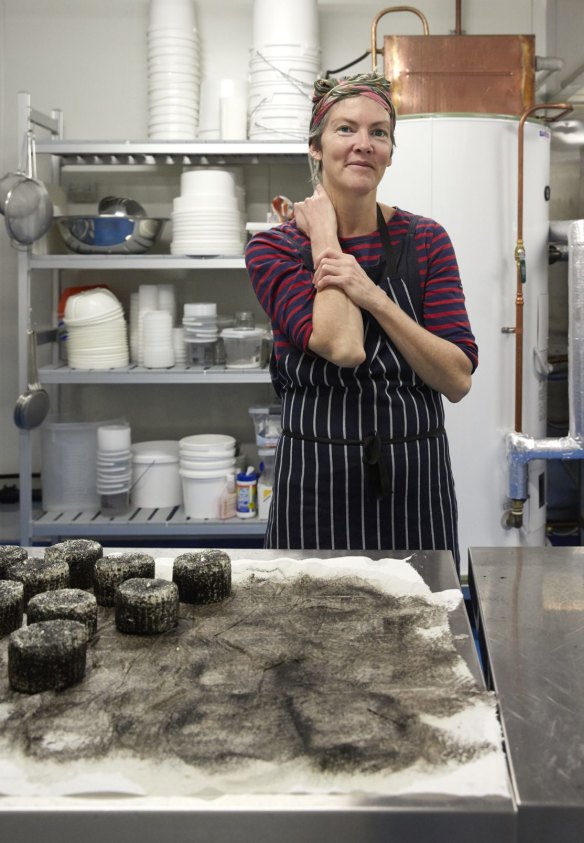
Kristen Allan
Allan (pictured right) was once maker of Sydney's most in-demand ricotta. Now she's focused on teaching, which means lucky newbies get access to her secrets through classes delivered in-person (when able) and virtually.
Ricotta, yoghurt and labne are offered online while it's hands-on for feta, stracciatella and more. kristenallan.com.au
The Cheese School, Castlemaine
The project of Alison Lansley, secretary of the Australian Specialist Cheesemakers Association, and highly regarded cheesemakers Ivan and Julie Larcher of Long Paddock cheese, The Cheese School has been sporadically running small classes for chefs since it opened earlier this year. Stay tuned for half-day, full-day and two-day workshops. millcastlemaine.com.au
Milawa Cheese Tasting
Expand your cheese appreciation on September 16 and 23 with a live tasting from Milawa's cheesemaker Cameron Rowan. He'll share the ins and outs of farmhouse cheese, how Milawa cheese reflects Victoria's High Country and how a perfectly ripe cheese should taste (and words to describe it).
You'll get four cheeses to try at home. Bookings close four days before each event. $85 a head. victoriashighcountry.com.au
OmNom
This Sydney cheesemaking school has pre-recorded virtual classes that show you how to make feta, halloumi, mozzarella, burrata and more in under an hour.
Buy rennet, cheesecloth and more from the online store, consult the guide on buying the right milk and you're away. omnomcheese.com
Graham Redhead's Cheesemaking
Industry veteran Graham Redhead's two-day intensive cheesemaking courses, drawing on nearly 25 years' teaching experience, are offered in capital cities around Australia at beginner and intermediate levels.
Dates are tentative due to lockdowns – keep checking the website. cheesemaking.com.au
Cheeselinks
Cheeselinks offers both cheesemaking courses and an online store stocked with everything you need for home cheesemaking, from rennets and starter cultures (see recipe below) to little baskets used for making feta.
Your new lockdown passion as a cheesemaker starts here. cheeselinks.com.au
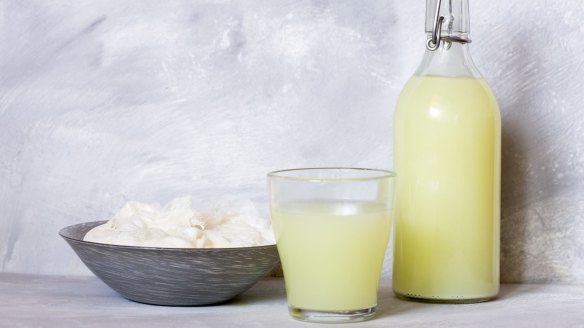
TRY IT AT HOME
Kristen Allan's ricotta
INGREDIENTS
- 2 litres unhomogenised milk
- 200ml cream
- 80ml lemon juice
- 1 tbsp sea salt
METHOD
- Add a small amount of water to the cover the bottom of a pot. This will help to prevent the milk burning on the bottom.
- Starting with the milk, pour all the ingredients into the pot and stir gently.
- On a medium heat, gradually bring the milk up to about 95C. Resist the urge to stir too much as this will break up the curds, making the texture dry and chalky rather than lovely soft, voluptuous milky curds.
- Once the temperature reaches 95C and your curds have formed, remove from heat and leave to settle for 10 minutes. Don't boil the mixture or, again, you will end up with dry, tasteless ricotta. If you notice that the milk hasn't separated or curdled enough, add more lemon juice, a tablespoon at a time, until you can clearly see the separation of curds and whey.
- Line the colander with damp muslin and place a bowl underneath to catch the whey. With a slotted spoon, gently scoop the curds into the colander. Drain for about 10 minutes then transfer curds to an airtight container. Ricotta will keep in the fridge, for about 14 days – if you can resist it that long!
What to do with the whey: Don't discard the whey after making ricotta! Use it in place of water when baking – crackers, bread, flatbread, pancakes, muffins etc. It's also great for braising and marinating meat, making pasta sauces and using it in place of stock in soups or curries. Refrigerate it for up to a week or freeze it.
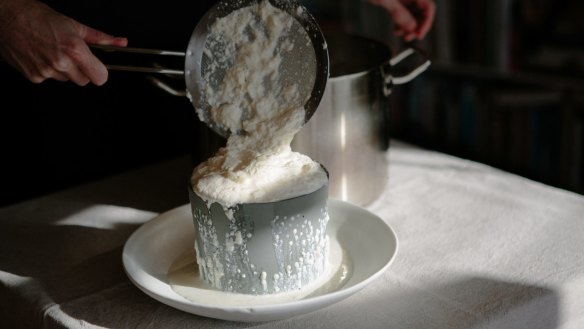
Fromage blanc and soft, creamy feta
INGREDIENTS
- 3 litres unhomogenised milk
- tiny pinch of starter culture*
- rennet (this comes in different strengths so follow the instructions on the bottle/packet to see how much to use per litre of milk)*
- ½ tsp sea salt
METHOD
- Warm milk to 32C in a heavy-based pot over low heat. Remove from stove.
- Sprinkle starter culture on top of the milk and stir for at least 2 minutes. Add rennet to milk and stir for a further 2 minutes.
- Cover pot with a lid and keep in the warmest part of your kitchen, to ripen overnight. Do not disturb the pot during this time. In the morning, you should have a sweet lactic curd. (Ensure you take a big deep inhale as you take the lid off the pot as there's nothing quite like the smell of fresh curd in the morning.) A thin layer of whey will cover the top of your milky jelly and the curd will be pulling away slightly from the sides of the pot.
- Line a colander with damp cheesecloth and slowly ladle the curd and drain until desired texture is achieved, usually 2-3 hours. You'll be able to tell when the fromage blanc is ready as the top of the curd will start to peel away from the side of the cloth.
- Transfer to a bowl, add salt (½ teaspoon per 1kg of cheese) and mix well. I like to use a whisk to whip the curd to remove any lumps and make it light and fluffy. Voila, fromage blanc! Refrigerate in an airtight container and eat within 3 weeks.
Makes about 1kg
For soft creamy feta
- Spoon fromage blanc into cheese baskets, drain for 5 hours at room temperature and then continue to drain for a further day in the fridge.
- After draining, carefully remove feta from the basket and keep in an air-tight container. Refrigerate in an airtight container and eat within 3 weeks.
EQUIPMENT
- 4-litre stainless steel pot
- Thermometer
- Slotted spoon
- Colander
- Bowl
- Cheesecloth
- Cheese baskets for the feta. (Allan recommends ceramic forms from pommegranite.com.au.)
- Rennet
- Starter culture
*Note: Rennet and starter culture are both available from cheeselinks.com.au
- More:
- Food
